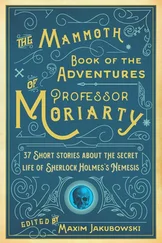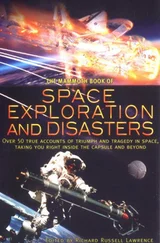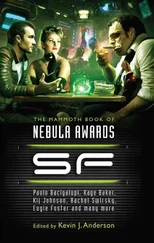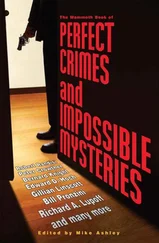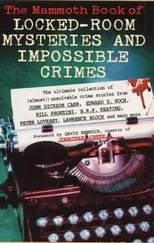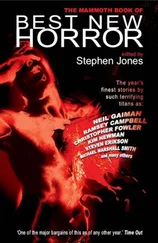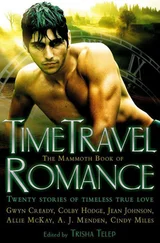The pilot’s reports I wrote afterward were devoid of these sensations – as a professional test pilot, you were expected to maintain a dispassionate tone. Consider these excerpts from the report following the eighth powered flight: “After pilot entry in the usual fashion at 7000 ft, the XS-1 was dropped from the B-29 at 20,000 ft and at 260 m.p.h. indicated airspeed… Immediately after the drop, all cylinders were started in rapid sequence, and with all four in operation it was noted that No. 1 and No. 3 had 210-psi chamber pressure, No. 2 and No. 4 having 220 psi, with approximately 290-psi LOX and fuel line pressure… The climb was made at .85 to .88 Mach until 40,000 ft was reached.”
That flight, on Oct. 10, signalled enormous progress in the X-1 program. We thought it was only a matter of time before we’d push through the sound barrier. What would it be like? A pebble in the road of aviation we had merely to step over? Or an insurmountable Chinese Wall that would destroy the X-1 – and me with it? Naturally, thoughts at these moments turned to Glennis and my boys, who sacrificed plenty out in the desert in those brightly lit days of the late 1940s. I wanted to fly, wanted to take my shot at the speed of sound. And they were my own personal cheering section.
As I stood looking at my carrot, my glasses and my rope on the morning of Oct. 14 – broken ribs secretly knifing at my side – I thought that this just might be the day. The eighth powered flight had gone exceedingly well. We had flown as fast or faster than anyone ever had before. And it looked as though we only had to step over the line to enter aviation’s new age. The day of the ninth powered flight began in the usual way. I fried the eggs while Glennis got ready to drive me over to the airfield. I’d had a bad night’s sleep – from the pain in my side, but also from the indecision about whether or not to fly the mission incapacitated. Tossing and turning, I decided to make up my mind in the air. If it became physically impossible to climb into the X-1, then I’d scrub the mission. If I could get into the pilot’s seat, I knew I could fly.
As the team swarmed over the X-1, with cords from trouble lights dangling in the early morning gloom, and tools, racks, ladders and other gear surrounding the little ship, Ridley began the preflight coaching. “We got that Drene shampoo for the windshield,” he said, “so you shouldn’t have any trouble with the windscreen frosting over. Now remember, you play around with the stabilizer setting before you make your high-speed run. We know you’ll lose some elevator control, so find out where you get the most longitudinal control with the stabilizer. Try it at different settings and different speeds above .85 or .86 Mach.” Discussions continued over coffee. There was a heightened intensity, a new determination, on the part of everyone involved. This was it.
This was the day. Would it end with another record shattered? Or with failure’s grim finality?
After the X-1 was fueled, I returned to the ready room with Ridley to don my flight suit. Briefings continued, peppered by admonitions and warnings: “Under no circumstances are you to…,” “In the event of…,” “You’d better be sure to…” Their whole point was to make sure I didn’t take the X-1 over .96 Mach if I didn’t think the plane could handle it.
Fear crouched in the deep recesses of the mind – present, accounted for, but well controlled. With the fueling and mating procedures completed, I walked back out to the B29 and stooped low to make a last-minute check of the X-1’s instrumentation. My helmet and oxygen mask were well secured behind the seat, I jogged to the boarding ladder and started climbing. Then there was the long wait as the B-29’s engines fired, the big bird began its takeoff roll and lumbered up to the drop altitude. I sat on a metal box inside the plane, ignoring my safety belt against the regulations. At 5000 ft, I nudged Ridley and said, “Let’s go.” We walked back to the bomb bay hatch and strode through. There was the little X-1, dangling in all that wind and cold and thinning air. Every move was torturous at this altitude. Getting into the X-1 on a good day was tiring enough. But I struggled through, wangled the hatch closed with the help of a 10-in piece of broomhandle I’d fashioned for the purpose (because of the limits imposed by my broken ribs) and continued checking the X-1’s pressurization, fuel delivery and controls.
Richard Frost, Bell project engineer, was flying low chase that morning, and Lt. Bob Hoover was flying high chase well ahead of the B-29, both in Lockheed P-80s. In the standard routine, Frost would pull into a slight climb as I lighted the first chamber, aiming for Hoover’s P-80 about 10 miles ahead. I would try to pass Hoover at relatively close range as the fuel supply depleted, and he’d follow me down for an unpowered landing on the lakebed.
Everything was set inside X-1 as Cardenas started the countdown. Frost assumed his position and the mighty crack from the cable release hurled the X-1 into the abyss. I fired chamber No. 4, then No. 2, then shut off No. 4 and fired No. 3, then shut off No. 2 and fired No. 1. The X-1 began racing toward the heavens, leaving the B-29 and the P-80 far behind. I then ignited chambers No. 2 and No. 4, and under a full 6000 pounds of thrust, the little rocket plane accelerated instantly, leaving a contrail of fire and exhaust. From .83 Mach to .92 Mach, I was busily engaged testing stabilizer effectiveness. The rudder and elevator lost their grip on the thinning air, but the stabilizer still proved effective, even as speed increased to .95 Mach. At 35,000 ft, I shut down two of the chambers and continued to climb on the remaining two. We were really hauling! I was excited and pleased, but the flight report I later filed maintained that outward cool: “With the stabilizer setting at 2 degrees, the speed was allowed to increase to approximately .95 to .96 Mach number. The airplane was allowed to continue to accelerate until an indication of .965 on the cockpit Mach-meter was obtained. At this indication, the meter momentarily stopped and then jumped up to 1.06, and the hesitation was assumed to be caused by the effect of shock waves on the static source.”
I had flown at supersonic speeds for 18 seconds. There was no buffet, no jolt, no shock. Above all, no brick wall to smash into. I was alive.
And although it was never entered in the pilot report, the casualness of invading a piece of space no man had ever visited was best reflected in the radio chatter. I had to tell somebody, anybody, that we’d busted straight through the sound barrier. But transmissions were restricted. “Hey Rid-ley!” I called. “Make another note. There’s something wrong with this Machmeter. It’s gone completely screwy!”
“If it is, we’ll fix it,” Ridley replied, catching my drift. “But personally, I think you’re seeing things.”
Chuck Yeager retired as a General USAF.
Eugene F. May tests the Skyrocket
Eugene F. May was test pilot for Douglas Aircraft from 1941 to 1952 and contributed much to the advancement of aviation. He is best known for his work with the Skystreak (the first supersonic jet aircraft) and the Skyrocket (the first Mach 2 aircraft). He was only the sixth person to fly supersonic but was: the first to fly faster than the speed of sound in a jet aircraft; the first to fly faster than the speed of sound in an aircraft taking off under its own power; the first to fly faster than the speed of sound at ground level; the first to fly faster than the speed of sound in two different aircraft models; and the first grandfather to fly supersonic!
When Gene May decided he didn’t want to continue with the Skyrocket program, Bill Bridgeman was a production test pilot for Douglas flying Skyraiders and was asked to become May’s replacement. Before making his decision, Bill went to Muroc to see the plane, talk with Gene and witness a flight. Bill Bridgeman described what it was like to be involved with a rocket plane flight:
Читать дальше

